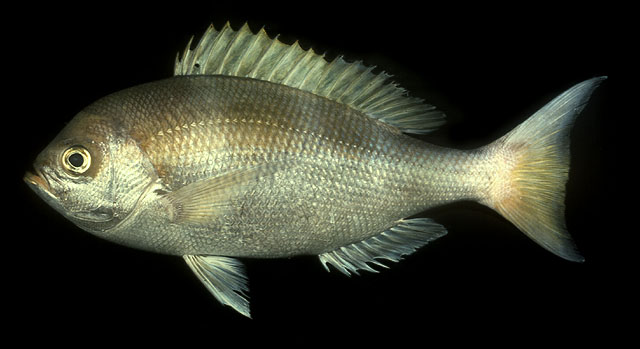| Lutjanidae (Snappers), subfamily: Apsilinae |
| 60 cm SL (male/unsexed) |
|
demersal; marine; depth range 100 - 310 m |
| Western Pacific: Samoa to Taiwan and Singapore and from the Ryukyu and Ogasawara islands southward to New Caledonia and northeastern Australia. |
|
Dorsal spines (total): 10-10; Dorsal soft rays (total): 10-10; Anal spines: 3-3; Anal soft rays: 8-8. Eye large, about 3.6 times in head length. Interorbital space convex. Large specimens developing a hump on forehead. Lower jaw protruding slightly. Maxilla scaled. Scale rows on back parallel to lateral line. Pectoral fins long, reaching level of anus. Back and upper sides brown; remainder of head and body silvery white with 4 broad vertical bars on upper side. Fins grayish, whitish or slightly yellowish. |
| Adults are found over rocky bottoms. Marketed fresh. |
|
Least Concern (LC); Date assessed: 05 March 2015 Ref. (130435)
|
| harmless |
Source and more info: www.fishbase.org. For personal, classroom, and other internal use only. Not for publication.

